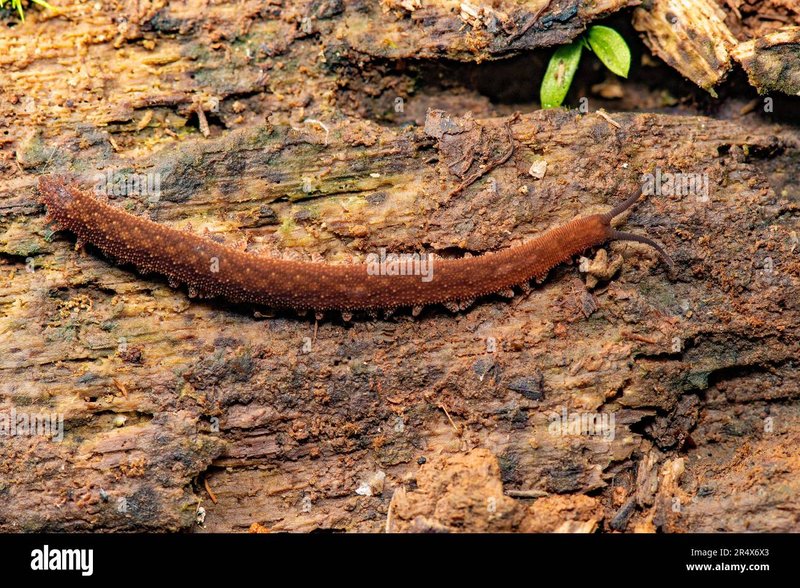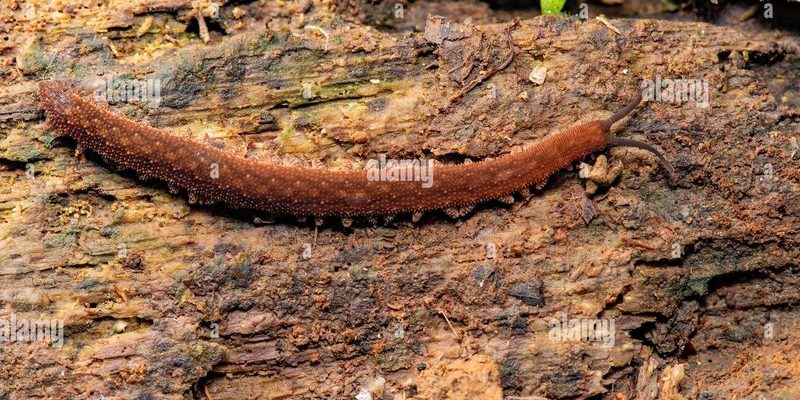
So, what’s the big deal about velvet worms in protected forest reserves? Well, it’s all about balance. These creatures play a key role in maintaining their ecosystems through their predatory habits and symbiotic relationships with other organisms. As we dive into this topic, you might be wondering why velvet worms matter and what their presence indicates about environmental health. Let’s explore the remarkable world of velvet worms and how they thrive in these protected areas.
What Are Velvet Worms?
Velvet worms, scientifically known as *Onychophora*, are soft-bodied, segmented animals that may look peculiar compared to other familiar insects or worms. They typically have a flattened body covered in tiny tubercles, giving them that soft, velvety appearance. Their limbs, often described as stubby, help them navigate their damp, forest-floor habitats.
These fascinating creatures can range in color from brown to green, often blending in seamlessly with their environment. They play a vital role as predators, feeding primarily on small insects and other invertebrates. What’s really interesting is how they hunt. Velvet worms eject a sticky slime to capture their prey, showcasing a unique hunting strategy that seems almost like something out of a science fiction story!
If you’ve never seen a velvet worm, you might be surprised by how adorable they can look while still being tough little hunters. But it’s not all about their cuteness; their presence signifies healthy ecosystems, especially in protected forest reserves.
The Importance of Protected Forest Reserves
Protected forest reserves are like sanctuaries for wildlife, where ecosystems can thrive without the pressure of urban development or heavy logging. These areas are crucial not only for the plants and animals that live there but also for the planet’s overall health. Think of them as the lungs of the Earth—absorbing carbon dioxide, producing oxygen, and providing a habitat for countless species.
In these reserves, velvet worms find the perfect environment to flourish. The moist, shaded forest floor offers them adequate humidity levels, essential for their survival. Plus, with a rich layer of organic matter, they have plenty of food sources. By conserving these forest areas, we’re not just saving the velvet worms; we’re protecting a whole web of life.
Here’s the thing: when we protect these habitats, we’re also ensuring that other species—like birds, amphibians, and plants—continue to thrive. Each organism has a role to play, and when one is missing, it can create a ripple effect throughout the ecosystem.
Threats to Velvet Worm Populations
Despite their cool adaptations, velvet worms face some serious threats, primarily due to human activities. Deforestation, habitat fragmentation, and climate change can negatively impact their populations. As forests are cleared for agriculture or urban development, velvet worms lose their homes and, with that, their chances of survival.
Moreover, as the climate shifts, temperatures and humidity levels in their habitats can change drastically. If it gets too dry or too warm, velvet worms may struggle to reproduce and find enough food, leading to a decline in their numbers. Unfortunately, this decline can have far-reaching effects, highlighting just how interconnected our ecosystems really are.
By understanding these threats, we can take steps to protect velvet worms. This means advocating for sustainable practices and supporting conservation efforts. The survival of these quirky creatures may just depend on our actions today.
Monitoring Velvet Worm Populations
Monitoring populations of velvet worms in protected forest reserves is crucial for understanding their health and survival. Biologists often use various methods—like field surveys and environmental DNA testing—to track these elusive creatures.
Field surveys involve researchers going out into the forests and looking for velvet worms in their natural habitats. It’s like a little treasure hunt, where scientists carefully search under logs, leaves, and rocks. On the other hand, environmental DNA (or eDNA) testing allows researchers to collect soil samples and analyze them for traces of velvet worm DNA. This non-invasive method helps inventory their populations without disturbing their habitats.
Why does this matter? By keeping close tabs on velvet worm populations, we can gain insights into the overall health of the forest ecosystem. If velvet worms thrive, it often means that the ecosystem is in good shape. Conversely, if their numbers start to dwindle, it could be a warning sign that something’s off in their environment.
How Protected Forest Reserves Aid Conservation Efforts
Protected forest reserves are vital in conservation efforts, providing safe havens for many species, including velvet worms. These areas often become focal points for research and education, helping raise awareness about the importance of biodiversity and ecosystem health.
Conservationists can also use these reserves as living laboratories, where they can study fauna and flora, test new conservation strategies, and monitor changes over time. When scientists understand how to protect specific species, like velvet worms, their work can help inform larger conservation practices.
What’s more, these reserves often foster community engagement. Local communities can participate in conservation activities, learning about the importance of protecting their local wildlife. This connection can lead to better stewardship of the environment, ultimately benefiting both the velvet worms and the broader ecosystem.
The Future of Velvet Worms in Protected Areas
The future of velvet worms in protected forest reserves looks promising, especially with the right conservation efforts in place. As awareness grows about these unique creatures and their ecological importance, more resources are being directed toward their preservation.
Furthermore, initiatives aimed at restoring habitats and improving climate resilience can create ideal conditions for velvet worms to thrive. Maintaining healthy populations can help ensure that these little creatures continue to contribute to their ecosystems for generations to come.
But here’s the catch: it takes a collective effort to protect these hidden gems. Whether you’re a scientist, a local resident, or just someone who loves the outdoors, you play a role in conservation. By supporting sustainable practices and advocating for forest protection, we can create a brighter future for velvet worms and the rich ecosystems they inhabit.
In conclusion, velvet worms may not be the first creature that comes to mind when we think about biodiversity, but they play a significant role in forest health. As we continue to protect forest reserves, let’s remember the velvet worms and the silent work they do to maintain ecological balance. With our combined efforts, we can ensure that these fascinating creatures continue to thrive among the rich tapestry of life found in our protected forests.

